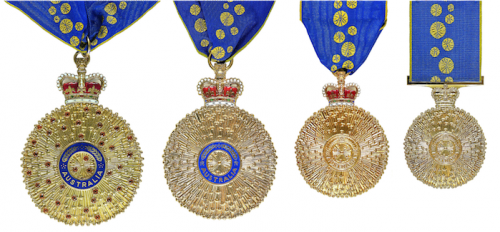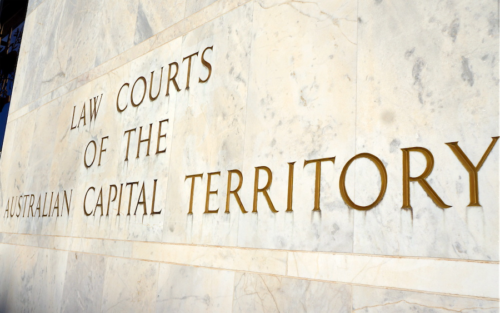 I RECENTLY attended a ceremony at Government House at which a number of Canberra citizens, who have embraced the notion of good citizenship and live it in their day-to-day lives, were appropriately recognised under the Australian Honours System.
I RECENTLY attended a ceremony at Government House at which a number of Canberra citizens, who have embraced the notion of good citizenship and live it in their day-to-day lives, were appropriately recognised under the Australian Honours System.
My sense is that the Order of Australia in its intent and operation has the overwhelming support of Australians. I have no doubt it is regarded as relevant and important and that awards made under it are viewed as genuinely prestigious. I am unambiguously supportive of the Order.

For instance, of the 519 recipients in the Queen’s Birthday honours in June there were twice as many men as women. To be precise 349 or 67 per cent of the awardees were men and 170 or 33 per cent, one third, were women. Men also substantially outnumbered women in the number nominated by 523 or 70 per cent to 225 or 30 per cent of all nominees.
Interestingly, in a previous career I was the secretary of the House of Representatives Standing Committee on Legal and Constitutional Affairs that in 1992 delivered a major report on the status of women in Australia.
The committee identified the under-representation of women in the Order as an issue deserving of dedicated attention and made recommendations to that effect. The recommendations were not pursued. The report, written 23 years ago, was concerned that only one quarter of awards were being made to women.
A common response at that time (and still today) to the concern about the under-representation of women in the Order of Australia is that since far fewer women than men are nominated the hands of the Order are effectively tied. There is nothing it can do.
And it can indeed be argued that in the Queen’s Birthday honours, this year, while 33 per cent of the awards went to women, of the women nominated 76 per cent received an award and that of the men nominated only 67 per cent received an award.
This suggests that if equal numbers of men and women were nominated that more women than men would be recognised.
These outcomes of themselves are worthy of some analysis but the underlying issue of the gender disparity in the overall number of awards demands greater attention.
In the 25 years since I was first involved in a detailed way in considering this matter the outcomes from the Queen’s Birthday awards in June suggest that there has been little apparent progress.
In relation to the stubborn gender gap in the Order of Australia the issue that seems to demand attention is to discover why relatively few women are nominated.
How can this be explained? Is it that most nominations are made by men and that men are inclined to nominate other men?
If so why is that?
Is it that women are less inclined to engage in the nomination process because they are less mindful of awards and personal recognition than men and don’t see the pursuit of recognition as a priority in a busy life? Do women have a different perspective than men about which activities or actions or behaviour is praiseworthy?
Is it, heaven forbid, about differences between the male and female ego? Are awards and public recognition simply more important to men than women and men actively seek opportunities to be nominated?
I don’t know the answer to any of these sorts of questions. My fear, however, is that there is a collective (if perhaps unconscious) predisposition in society to not value the work and role of women to the same extent or in the same way that society values the things men do.
Since the inauguration of the Australian Honours System in 1975 about 31,000 Australians have been recognised in the Order of Australia. In that time, my understanding is that about 10,000 more men than women have received an Order of Australia. That is not fair and the discrimination against women in the Order of Australia should be addressed.
Jon Stanhope was Chief Minister from 2001 to 2011 and represented Ginninderra for the Labor Party from 1998. He is the only Chief Minister to have governed with a majority in the Assembly.
He was appointed an officer in the general division of the Order of Australia for his service to the ACT ”through leadership roles, to the advancement of human rights and social justice, and to economic development” in January, 2014.
Who can be trusted?
In a world of spin and confusion, there’s never been a more important time to support independent journalism in Canberra.
If you trust our work online and want to enforce the power of independent voices, I invite you to make a small contribution.
Every dollar of support is invested back into our journalism to help keep citynews.com.au strong and free.
Thank you,
Ian Meikle, editor



![Teacher Vanessa Jones has been living in Higgins since 2001, and while she loves the area, she says she is “fed up” with the neglectful ACT government.
The Higgins shops have been completely abandoned, says Vanessa, preventing the opportunity for residents to have a community-centred space to socialise.
They only received bins nine months ago, she says, and requests for a water station and repairs to the bus station have gone unanswered.
“It’s very, very slow,” says Vanessa.
“I asked for the zebra crossing on Fullagar [Crescent] to be repainted, and we had to wait about six or nine months.
“That’s just such a long time… we pay a lot of rates.”
Vanessa says assistance from the government only seems to go to communities with time-rich and assertive communities, leaving places such as Higgins, where the majority of households have both adults working full-time and English may not be the first language of the family, at an automatic disadvantage.
“If you’ve got two people working, paying a mortgage, raising two or three kids, they don’t have the time,” says Vanessa.
Vanessa says the lack of attention quieter places such as Higgins is receiving is starting to look a lot like favouritism.
Read the full article on our website citynews.com.au
#canberra #canberranews](https://citynews.com.au/wp-content/plugins/instagram-feed/img/placeholder.png)
Leave a Reply